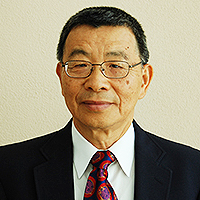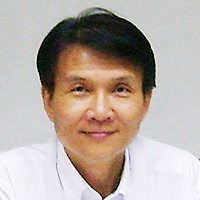in silico discovery of potential inhibitors against Dipeptidyl Peptidase-4: A major biological target of Type-2 diabetes mellitus
Published on: 26th February, 2020
OCLC Number/Unique Identifier: 8560723476
Objectives: Type-2 diabetes mellitus, caused by impaired secretion of insulin, is becoming one of the health hazardous threats to human lives across the world. Its prevalence is rising with time. In this study, 2750 phytochemicals, that are considered to have great ability to eliminate diseases caused by different viruses and bacteria, are obtained from different medicinal plants and discovery of inhibitors through in silico method was performed against Dipeptidyl peptidase-4 (DPP4).
Method: The pharmacological assessment and pharmacokinetics of phytochemicals, molecular docking and density functional theory (DFT) analysis helped to explore the inhibitory action of phytochemicals against DPP4. Total forty-nine phytochemicals were screened initially to reduce the number of compounds to be analyzed further based on a threshold of binding affinity ≥ -5.5 kcal/mol and were considered for further computational studies to analyze their inhibitory effects for DPP4. For comparison and validation of the results of present study, various previously reported and experimentally validated compounds were docked with the DPP4. For these dockings, binding affinity was predicted and compared with those of phytochemicals to check if these phytochemicals are competent enough to be used as an inhibitor in the treatment of diabetes mellitus in the future.
Results: Only four phytochemicals showed binding affinity greater than those of experimentally validated compounds. These included two phytochemicals from Silybum marianum, i.e. Diprenyleriodictyol and Taxifolin and while other two phytochemicals from Santolina insularis and Erythrina Varigatae i.e. Papraline and Osajin respectively. The reactivity levels for these four phytochemicals with the binding site residues of DPP4 were obtained by DFT based analysis, in which ELUMO, EHOMO and band energy gap were computed.
Conclusion: Based on these results, it is concluded that these four phytochemicals, after passing through in vitro and in vivo validation, can be utilized as potential DPP4 inhibitors as they have strong properties as compared to those of various experimentally validated inhibitors.
Au26-35: A Special Geometrical Structure of Au33 (D2) Cluster with Highly Occupied - 14 Pairs of Double-State Degeneracy
Published on: 30th December, 2022
In this article, an interesting phenomenon has described the geometries and vibrational frequency of the stable AuN clusters with N = 26 to 35. We have found nine out of ten clusters are having the very same C1 symmetry, except the cluster N = 33 (D2). The finite-differentiation method has been implemented within the density-functional tight-binding (DFTB) approach. The effects of the range of interatomic forces were calculated and the desired set of system eigenfrequencies (3N-6) are obtained by diagonalization of the symmetric positive semidefinite Hessian matrix. Mainly, we have observed the vibrational spectra and the range comes in between 2.04 and 347.32 cm−1 at ground state, ∆E = 0. Most significantly, all the clusters have revealed double-state degeneracy. The vibrational spectrum is strongly dependent upon the size, shape, and structure, at the same time, the stretching and the bending mode of the atoms with respect to the bond length plays a major role. We have compared some of our results, which have an excellent agreement, with the less availability of the experimental and the theoretical predictions.
Sites and Zones of Maximum Reactivity of the most Stable Structure of the Receptor-binding Domain of Wild-type SARS-CoV-2 Spike Protein: A Quantum Density Functional Theory Study
Published on: 12th April, 2024
Today, it is well known that Severe Acute Respiratory Syndrome Coronavirus 2 (SARS-CoV-2) has four types of proteins within its structure, between them the spike protein (S). The infection mechanism is carried out by the entry of the virus into the human host cell through the S protein, which strongly interacts with the human cell receptor angiotensin-converting enzyme 2 (ACE2). In this work, we propose an atomic model of the Receptor Binding Domain (RBD) of the S spike protein of the wild-type SARS-CoV-2 virus. The molecular structure of the model was composed of 50 amino acids that were chemically bonded, starting with Leucine and ending with one amino acid Tyrosine. The novelty of our work lies in the importance of knowing the sites and zones of maximum reactivity of the RBD from the fundamental levels of quantum mechanics considering the atomic structure of matter. For this, the local and global reactivity indices of the RBD were calculated, such as frontier orbitals, Highest Occupied Molecular Orbital (HOMO) and Lowest Unoccupied Molecular Orbital (LUMO), Fukui indices, chemical potential, chemical hardness, electrophilicity index; with this, it will be possible to know what type of molecules are more likely to interact with the RBD structure, and in this way, new knowledge will be generated at the quantum, atomic and molecular level to inhibit the virulent effects of wild-type SARS-CoV-2. Finally, in order to identify the functional groups within the most stable structure and thereby verify the future reactions that can be carried out between the RBD structure and biomolecules, the Infrared (IR) absorption spectrum was calculated. For this work, we used Material Studio v6.0 which uses the density functional theory (DFT) implemented in its DMol3 computational code. The IR spectrum was obtained using the Spartan ‘94 computer code. One novelty would be that we found nine amino acids more that could make the RBD and ACE2 binding further the already known. Thus, the Mulliken charge distribution indicates that the highest concentrations of positive and negative charge are found in the zones 477S, 478T, 484E, and 501N amino acids letting ionic or Van der Waals possible interactions with other structures.
Benzothiazole-derived Compound with Antitumor Activıiy: Molecular Structure Determination Using Density Functional Theory (Dft) Method
Published on: 10th June, 2024
The Gaussian computational chemistry software package was employed to investigate the molecular structure and energetics of benzothiazole, a compound known for its anti-tumor properties. Density functional theory (DFT) calculations were conducted using the Becke, 3-parameter, Lee-Yang-Parr (B3LYP) method, coupled with the LanL2DZ basis set. Molecular structure optimization was carried out to determine the most stable configurations of the benzothiazole compound. Furthermore, thorough analyses of molecular orbital energies, molecular properties, and molecular electrostatic potential surface maps were performed on the optimized molecular system. Our current research suggests that the compound 2-(4-aminophenyl) benzothiazole, containing benzothiazole, maybe a potential drug candidate for free radical species on cells due to its anti-cancer properties.
A Study on Nuclear Physics Fission using the Relativistic Time-dependent Density Functional Theory Approach
Published on: 18th June, 2024
A thorough knowledge of the stationary characteristics of the nuclei of atoms, their stimulation wavelengths, how they react to outside factors, and how they disintegrate is the aim of nuclear structural science. Although achieving these objectives within just one structure is difficult and prevents the existence of a nuclear "standard model," it is evident that radioactive Density Functional Theory (DFT) offers perhaps the broadest variety of applications to date. We attempt to place DFT in a larger perspective in this study by making frequent allusions to electrical DFT. We also provide a brief overview of the numerous uses and an explanation of the connections between beginning techniques and Useful Field Concepts (EFTs) in particular. The article tries to promote collaborations with different scientific fields while being published from a subjective and perhaps biased point of view.
















